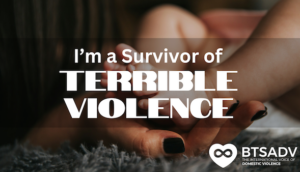Domestic violence reports are higher than the normal daily average on New Year’s Eve and New Year’s Day, with New Year’s Day averaging 2.7 times more incidents of domestic violence than the normal daily average.
New York Times
By Tara Woodlee
As the clock ticks towards the New Year, there’s a grim reality that shadows the celebrations: a 24-hour window where the warmth of festivity is marred by a chilling statistic. In those fleeting moments from New Year’s Eve to New Year’s Day, a haunting trend emerges—one that shatters lives and leaves a tragic legacy.
Imagine this: in that brief span, from dusk till dawn, the lives of ten women were violently snatched away by the very people who vowed to love and protect them—a partner, a spouse, a former flame. Ten women from different walks of life, spanning ages, backgrounds, and ethnicities, met their untimely end in the most harrowing way imaginable.
This isn’t just a past occurrence—it’s a recurring nightmare. On average days, two or three women fall victim to intimate partner violence. But during this seemingly celebratory transition, the numbers skyrocket, painting a chilling portrait of domestic terror.
Who among these statistics will resonate with us? Could it be someone we know, someone in our community, or even worse, someone within our own family? The uncomfortable truth is that it might. Sometimes, the warning signs linger, like a hushed secret that festers within households, concealed out of fear or reluctance to intervene.
The experts highlight a toxic storm brewing at year’s end—a potent mix of alcohol, financial stressors, and the strain of familial proximity. Kids home from school, relatives in tight quarters—all contributing to a pressure cooker scenario where tensions rise to a boiling point.
Reflecting on those dire 24 hours from two years ago, the victims weren’t bound by a common thread beyond their tragic fate. Married seniors, young couples from the West Coast, a family secluded in a remote Texas town—their lives were abruptly ended by the decision of a man who, for reasons unknown, felt entitled to snuff out the life of his partner or ex-partner.
This isn’t just an isolated incident; it’s a worsening crisis. Alarming statistics reveal an upward trend in domestic violence against women, painting a haunting picture of over 1,500 women murdered by men they knew intimately in 2016 alone—a staggering rise.
And while crime in general might be on the decline, the darkness of domestic violence looms larger. Even in a city like New York, amidst decreasing crime rates, the harrowing spike in domestic violence killings is an ominous sign. Three brutal incidents within a week in November served as a stark reminder that this issue knows no boundaries.
As we prepare to bid farewell to the year, let’s not overlook the reality that lingers behind the glittering festivities. Let’s raise awareness, break the silence, and extend a helping hand to those who might be silently suffering within the confines of their own homes. Because as the clock strikes midnight, for some, it marks not a new beginning, but a tragic end.
Finding Safety Amidst the New Year’s Shadow
In the midst of revelry and joy, there exists a haunting shadow. But in acknowledging this darkness, we empower ourselves to bring light and hope to those trapped within its grasp.
If you or someone you know is experiencing domestic violence during this period, there are crucial steps to ensure safety and seek help:
- 1. Prioritize Safety: If you feel unsafe or fear for someone else’s safety, don’t hesitate to call emergency services. Your safety matters above all else.
- 2. Reach Out for Support: There are dedicated hotlines and organizations available 24/7 to provide guidance and support. The National Domestic Violence Hotline (1-800-799-7233) offers confidential assistance and resources.
- 3. Create an Exit Plan: If it’s safe to do so, plan a way to exit the situation discreetly. Identify safe spaces or shelters where you or someone in need can seek refuge.
- 4. Signal for Help: Establish discrete signals or codes with trusted friends or family members to communicate distress without alerting the perpetrator.
- 5. Utilize Technology Safely: Technology can be a lifeline. Use it to reach out for help, store evidence discreetly, or access resources without raising suspicion.
- 6. Offer Support: If you suspect someone you know might be in an abusive situation, approach them with empathy and without judgment. Offer support and let them know they’re not alone.
- As we step into a new year, let’s remember that the dawn of a new beginning should never be tainted by fear or violence.
Together, by spreading awareness, lending support, and being vigilant, we can break the cycle of domestic violence and create a safer, brighter tomorrow for everyone.
If you or someone you know is experiencing domestic violence, don’t suffer in silence. Help is available, and every individual deserves to live a life free from fear and abuse.










